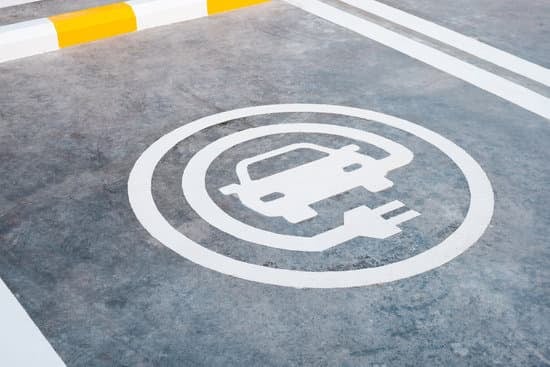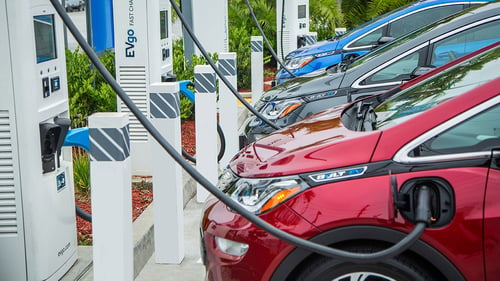Power Surge: How Gas Stations are Adapting to the EV Revolution

The rise of electric vehicles (EVs) is transforming the automotive industry and the way we think about transportation. As more consumers embrace EVs, traditional fuel stations are faced with a critical decision: adapt to the changing landscape or risk becoming obsolete.
“As EVs hit the road, gas stations will have to adapt or risk going out of business,” Rebecca Heilweil wrote in Vox. “Right now, gas stations are a regular part of American life, a place drivers go on a daily or weekly basis to fill up and sometimes grab a snack. But the fuel pump plus convenience store concept has much less to offer the country’s small but growing number of EV owners.”
According to CBT News, J.D. Power forecasts that the U.S. EV market share will hit 12.4 percent in 2024, a jump from 7.5 percent in 2023 – a gain of 63 percent. Last year EV sales grew at a 50 percent pace, hitting one million units for the first time.
One way that fuel stations and convenience stores (c-stores) are evolving is by adding EV charging options, particularly Level 3 high-speed chargers, to their existing infrastructure.
And those high-speed chargers can’t come any sooner for EV owners.
“Although the U.S. has tens of thousands of chargers across the Supercharger network and other providers, the supply has already been outpaced by demand in many highly populated areas, while in rural zones, infrastructure expansion efforts have largely just begun,” reported CBT News.
Level 3 Chargers: Getting Drivers Back on the Road Faster
Level 3 chargers, also known as DC Fast Chargers (DCFC), are the quickest way to charge an electric vehicle. These chargers can provide up to an 80 percent charge in just 30-60 minutes, depending on the vehicle's battery capacity and the charger's power output.
In contrast, Level 1 and Level 2 chargers, which are more commonly found in homes and workplaces, can take several hours to fully charge an EV.
The speed and convenience of Level 3 chargers make them an attractive option for EV drivers on the go, particularly those embarking on long-distance trips – which, of course, is in the gas station wheelhouse.
“Locations like office complexes, hospitals, and hotels typically offer a slower charging option, since people generally stay put for hours at a time. Gas stations, however, are investing in Level 3 chargers, which are more powerful and generally charge a car in 20 to 30 minutes,” reported CNBC.
DC Fast Chargers Come with Significant Upfront Costs
Installing Level 3 chargers comes with a significant upfront cost. These chargers require a substantial amount of electrical power and specialized equipment, which can cost anywhere from $50,000 to $150,000 per unit.
“Gas stations making the switch to electric vehicle charging will be investing in Level 3 chargers, which are the most powerful and generally charge in 20 to 30 minutes, but for multiple units can incur investment costs between $500,000 to $1 million,” reported CNBC.
Despite the high initial investment, many fuel stations and convenience stores are recognizing the long-term benefits of offering EV charging services.
CNBC said that adding EV charging capabilities is not a one-two decision that owners should take lightly. Indeed, the return on investment could be seven to 10 years on average, according to an estimate provided by Yair Nechmad, co-founder and chief executive of Nayax, a global commerce enablement and payments platform, that offers its services to gas stations.
EV Revolution: A Sea Change for Gas Stations
The rise of EVs presents both a challenge and an opportunity for gas stations. Those who cling solely to the pump risk becoming relics of the past.
However, proactive stations can transform themselves into mobility hubs, catering to both gasoline and electric vehicles.
Recognizing the importance of this transition, major oil companies are beginning to support their franchise filling stations by adding EV chargers. Shell, BP, and Chevron, among others, have announced plans to install thousands of EV charging stations at their retail locations in the coming years.
These companies understand that embracing the EV revolution is not only good for the environment but also essential for their long-term business success.
“For large oil giants, adding EV chargers is both a defensive and offensive play,” concluded CNBC.
Incentivizing the Switch: Government Support
In addition to private sector investment, government incentives at the local, state, and federal levels are playing a crucial role in accelerating the deployment of EV charging infrastructure.
Many states offer grants, tax credits, and other financial incentives to encourage the installation of EV chargers.
At the federal level, the Biden administration has proposed a $15 billion investment in EV charging infrastructure as part of its broader infrastructure plan.
“The Biden administration has a stated goal of having 500,000 electric vehicle chargers nationally where EVs make up at least 50 percent of new car sales by 2030. By current administration estimates, there are more than three million EVs and more than 130,000 public chargers nationwide,” says CNBC.
These incentives are helping to offset the high upfront costs of installing Level 3 chargers and making it easier for fuel stations and convenience stores to embrace the EV revolution.
Signs of Changing Times: EV Charging Ahead
The long-term prognosis for gas stations that do not adapt to the rise of EVs is uncertain at best.
As more consumers switch to electric vehicles and governments around the world implement policies to phase out gasoline-powered cars, the demand for traditional fuels will inevitably decline.
Fuel stations that fail to offer EV charging services risk becoming stranded assets, unable to compete in a rapidly evolving market.
The EV revolution presents both challenges and opportunities for traditional fuel stations and convenience stores. By investing in Level 3 high-speed chargers and other EV charging infrastructure, these businesses can position themselves for success in the low-carbon future.
Infrastructure investing will have to include new signage to alert drivers to fast charging stations.
“Signage for electric vehicle (EV) charging stations is an important consideration at workplaces, retail, and other commercial areas, and multifamily housing buildings that offer access to EV charging infrastructure,” explains the U.S. Department of Energy.
Appropriate charging station signage can:
- Help EV drivers navigate to and identify charging stations.
- Optimize the use of charging infrastructure by helping all drivers understand that parking spaces at charging stations are for EVs only.
- Provide information about policies—such as access, time limits, and hours of use—and facilitate enforcement.
- Enable uptake of EVs by providing visibility for charging infrastructure to prospective EV drivers.
- Identify charging station corridors.
With the support of major oil companies and government incentives, the transition to EV charging is becoming more feasible and attractive than ever before. For fuel stations that embrace this change, the road ahead looks bright and full of potential.
When your gas station or c-store is ready for new signage to keep up with the "charging times", reach out to PWM for the latest high-quality signage.





.webp?width=500&name=tl(15).webp)
